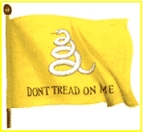Battle #1, 17 June 1941, KG Hauser Advance vs. Britain Delay near Sollum, Egypt
Situation at the end of German Turn 1.
SUPPORT FORCES
Of the miscellaneous DAK forces in the area, elements of the 5th Light Division were closest, so Col. Hauser radioed DAK HQ for permission to attach them to KG Hauser for the upcoming fight. KG Kruger was allowed to purchase 947 points worth of support units for this battle.
The 947 points of support forces allowed were spent as follows (all German from 5th Light Division):
27x Krupp medium trucks (216pts)
18x motorcycle squads (324pts)
2x Skfdz 252/1 mortars (68pts)
4x 81mm mortars (84pts)
4x SdKfz-6 prime movers (48pts)
3x recon gruppes (27pts)
12x scout truppes (108pts)
12x Kubelwagen MGs (72pts)
Total support points spent = 947 out of 947 allowed
The terrain for this battle is unusual due to the presence of a stream cutting across the desert battlefield from north to south. Realizing that the stream greatly increases the likelihood of mechanical breakdown, Col. Hauser decided to attack in the south where the Kamfgruppe would have to cross it only once in order to break through to the British rear. Once in the British rear, the Kampfgruppe is ordered to first capture the rear victory clusters and then circle to the north in a wide arc. The Kampfgruppe is then ordered to attack towards the forward victory clusters (which were all grouped together) from behind. A picket line of scout units, extending to the north edge of the battlefield, is to inch their way forward into good spotting positions to assist both the 88s, as well as the Kampfgruppe as they swing back towards the British forward positions.
GENERAL COMMENTS
1. An historian (Matthew Cooper) has written of Rommel:
“Rommel’s intuitive grasp of the principles and potential of armored warfare was remarkable, and it served to place him among the foremost exponents of the new idea . . . This was reflected in his attitude to warfare; he understood that victory for the armored force lay, in Rommel’s own words, the
‘art of concentrating strength at one point, forcing a breakthrough, rolling up and securing the flanks on either side, and then penetrating like lightning, before the enemy has time to react, deep into his rear.’ “
Col. Hauser believes in Rommel’s words and seeks to apply them in this battle. The compact ‘armored fist’ that Rommel advocates is in perfect accordance with what Col. Hauser learned from General Guderian during the battle for France in 1940.
2. Initialy, the Kampfgruppe’s 88s were deployed on the hill behind the Kampfgruppe in an overwatch position. As advancing recon units spotted them, these 88s quickly knocked out 7 British tanks. Then, they loaded into their prime movers and moved out for their next overwatch position (a low ridge line to the north). Col. Hauser intends to use the 88s in this manner, using 81mm mortar smoke rounds to conceal the loading and unloading of the 88s, throughout this battle.
3. Since there was not enough transport to fully motorize all of the Kampfgruppe, the non-motorized elements (MMGs, light mortars, and 1 rifle platoon) are to advance to a line of rough terrain in the central portion of the battlefield. They are to remain there in a fire-support role.
4. Due to the way that desert sand/dust obscures the battlefield because of motorized movement, the Kampfgruppe must coordinate its movement in such a way that the Kampfgruppe’s lines of fire are not obscured by its own movement. This is not an easy thing to do in a combat environment.
5. Unless the situation changes, the next battle report will be presented at the end of the German Turn 6.
The battle has begun.














